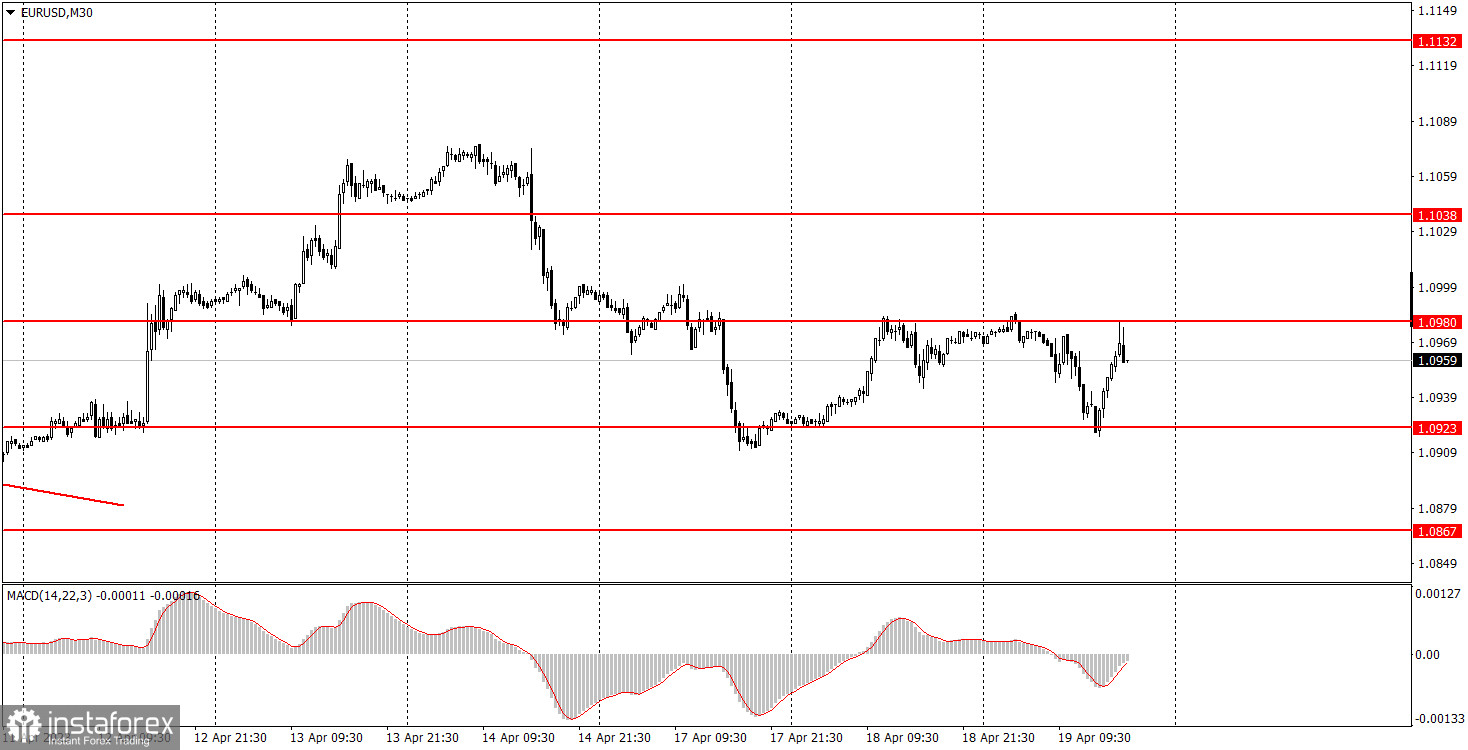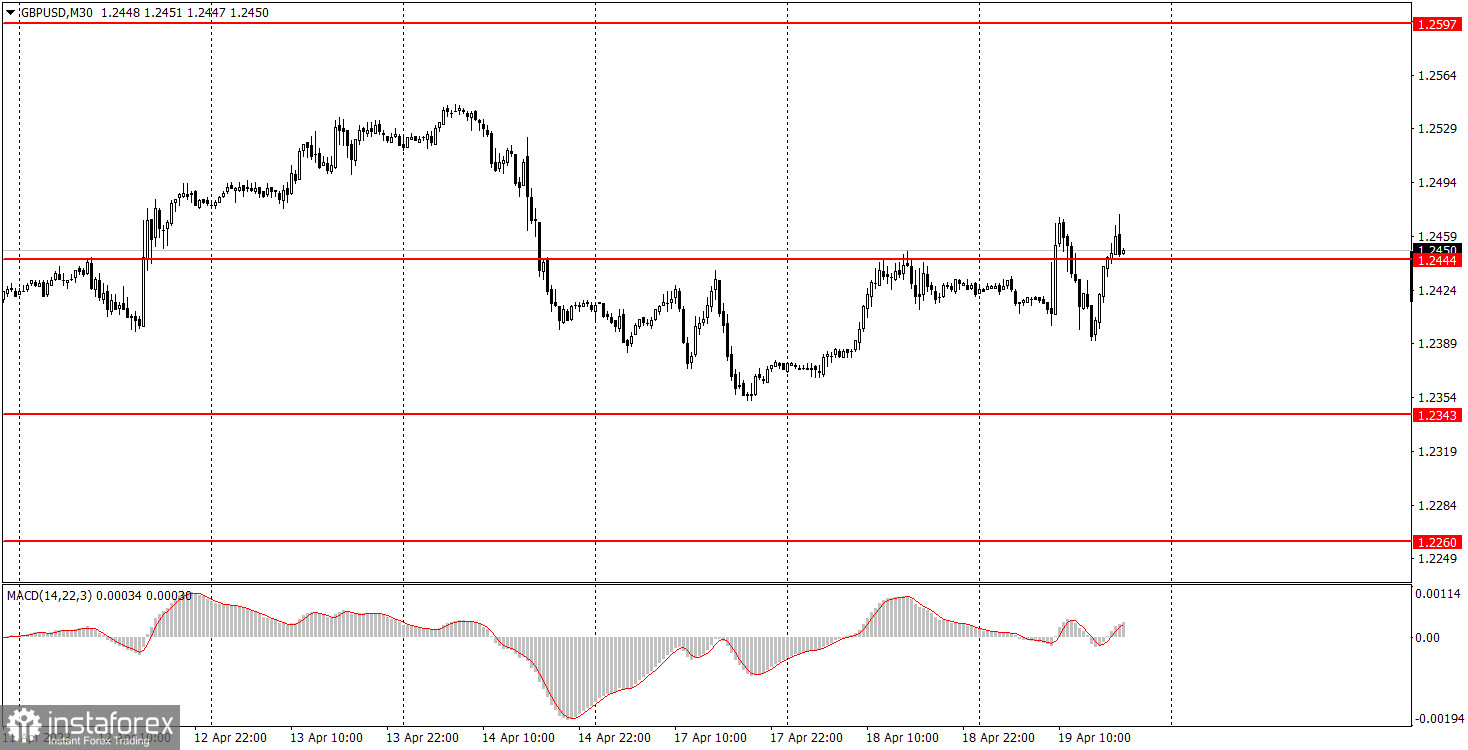Analysis of macroeconomic reports:

There will be few macro data releases on Thursday. The only report worth mentioning is the US jobless claims report, which rarely provokes any market reaction. This is not surprising since this report is released weekly and its forecasted values rarely differ from the actual ones. So for this reason, traders will hardly react to this data as well. Moreover, the US labor market is in excellent condition, as is the unemployment rate. Therefore, you shouldn't expect a sharp drop in the indicator, nor a strong growth, nor a reaction.
Fundamental events:

There are not many fundamental events to highlight on Thursday. There will be speeches by Federal Reserve representatives Christopher Waller and Michelle Bowman, as well as European Central Bank representative Isabel Schnabel. All three speeches will take place late at night, so they will have no impact on the pair's movement during the day. We'll learn more about these speeches on Friday. Therefore, it is safe to say that there will be no fundamental events on Thursday. We are in for an extremely dull day.
General conclusions:
Thursday will be another boring day. There will be no important events for the pound, the dollar, or the euro. Therefore, we'll probably witness low volatility and a lack of trend movement for both pairs.
Basic rules of the trading system:
1) The strength of the signal is determined by the time it took the signal to form (a rebound or a breakout of the level). The quicker it is formed, the stronger the signal is.
2) If two or more positions were opened near a certain level based on a false signal (which did not trigger a Take Profit or test the nearest target level), then all subsequent signals at this level should be ignored.
3) When trading flat, a pair can form multiple false signals or not form them at all. In any case, it is better to stop trading at the first sign of a flat movement.
4) Trades should be opened in the period between the start of the European session and the middle of the US trading hours when all positions must be closed manually.
5) You can trade using signals from the MACD indicator on the 30-minute time frame only amid strong volatility and a clear trend that should be confirmed by a trendline or a trend channel.
6) If two levels are located too close to each other (from 5 to 15 pips), they should be considered support and resistance levels.
On the chart:
Support and Resistance levels are the levels that serve as targets when buying or selling the pair. You can place Take Profit near these levels.
Red lines are channels or trend lines that display the current trend and show in which direction it is better to trade now.
The MACD indicator (14, 22, and 3) consists of a histogram and a signal line. When they cross, this is a signal to enter the market. It is recommended to use this indicator in combination with trend patterns (channels and trendlines).
Important announcements and economic reports that can be found on the economic calendar can seriously influence the trajectory of a currency pair. Therefore, at the time of their release, we recommend trading as carefully as possible or exiting the market in order to avoid sharp price fluctuations.
Beginners on Forex should remember that not every single trade has to be profitable. The development of a clear strategy and money management is the key to success in trading over a long period of time.
 English
English 
 Русский
Русский Bahasa Indonesia
Bahasa Indonesia Bahasa Malay
Bahasa Malay ไทย
ไทย Español
Español Deutsch
Deutsch Български
Български Français
Français Tiếng Việt
Tiếng Việt 中文
中文 বাংলা
বাংলা हिन्दी
हिन्दी Čeština
Čeština Українська
Українська Română
Română

